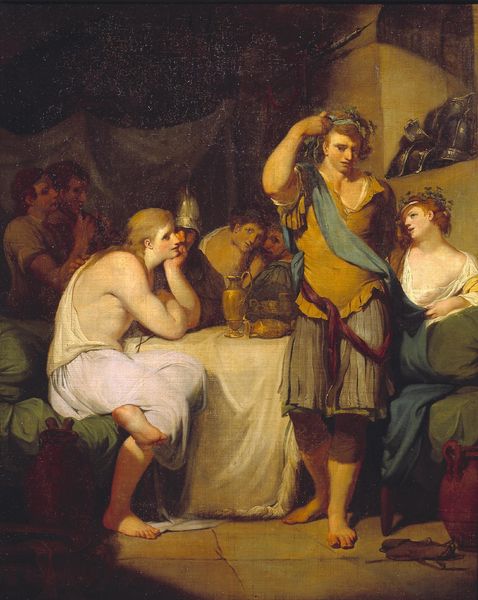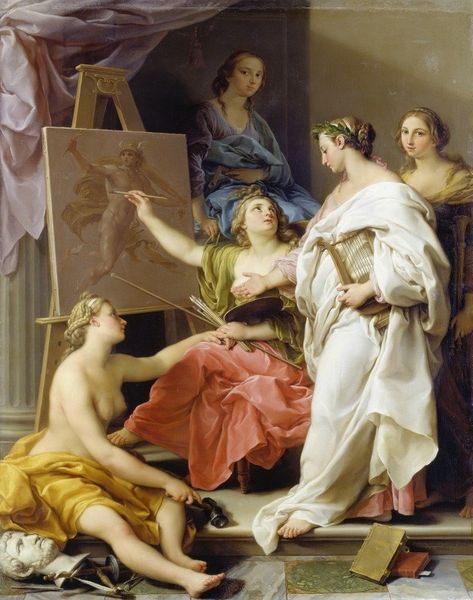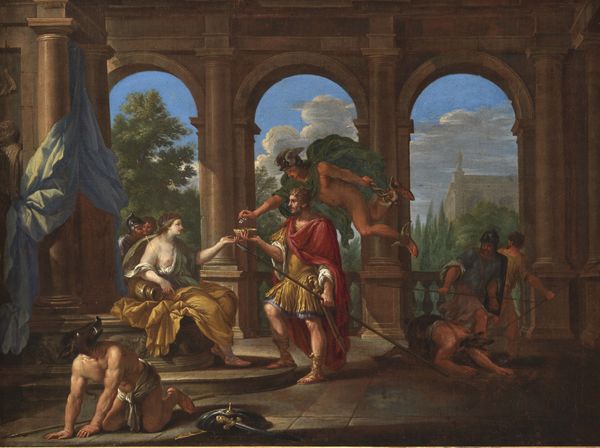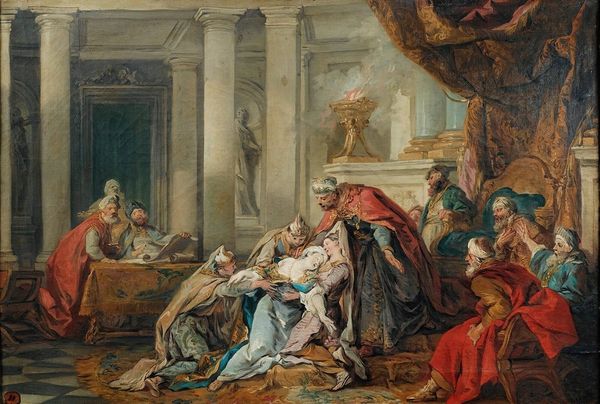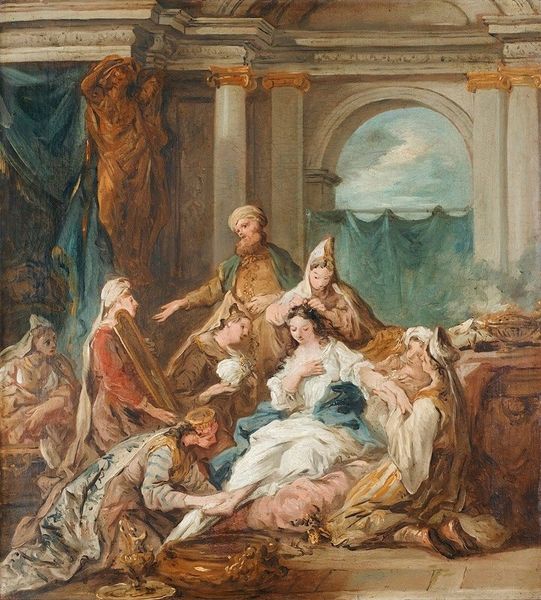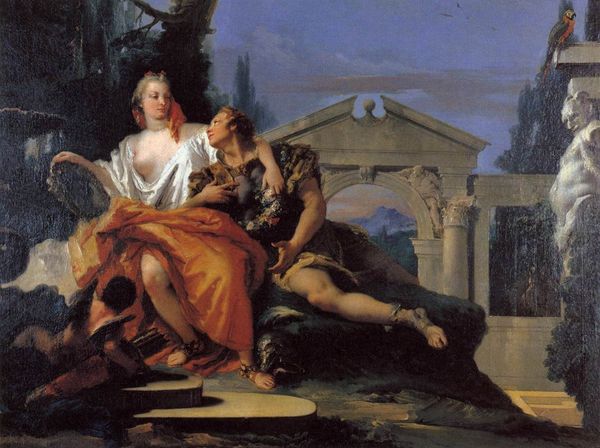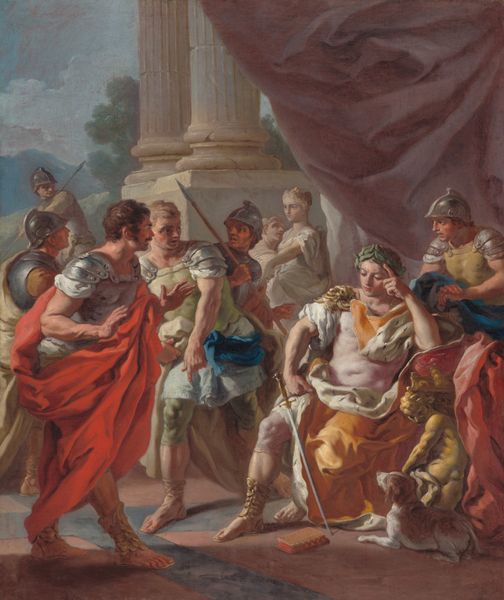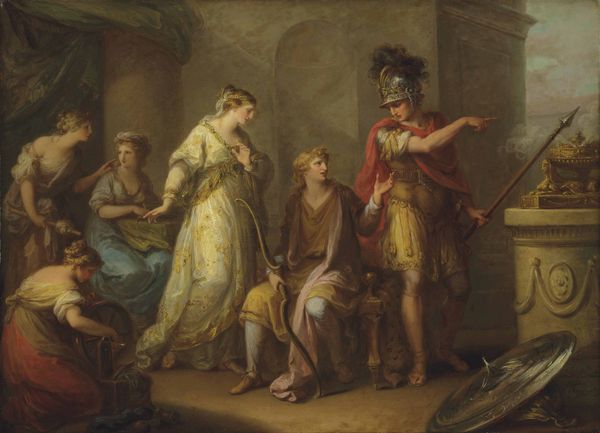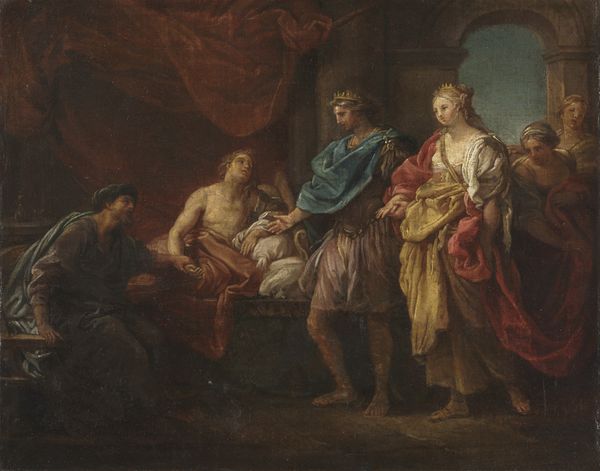
painting, oil-paint
#
portrait
#
venetian-painting
#
allegory
#
painting
#
oil-paint
#
oil painting
#
history-painting
#
nude
#
rococo
Copyright: Public Domain: Artvee
Editor: This is Giovanni Battista Tiepolo's "Alexander the Great and Campaspe in the Studio of Apelles," an oil painting from around 1740. I'm struck by the artist's depiction of labor, portraying Apelles in the act of creation. How do you read the relationship between power, beauty, and artistic production in this work? Curator: Well, let's consider Tiepolo's material choices. Oil paint, canvas - these were luxury goods, part of a system of patronage and artistic production serving the wealthy elite. Notice how Apelles is almost meticulously dressed? His attire is in stark contrast to the nearly nude Campaspe, emphasizing class distinctions and the power dynamics inherent in both artistic creation and the court. Editor: That's an interesting take. So, are you suggesting that the painting critiques or simply reflects those social structures? Curator: I think it does both. The scene itself—Alexander relinquishing his mistress, Campaspe, to Apelles upon recognizing the artist’s superior appreciation of her beauty—highlights a tension between martial and artistic power, all mediated through the material act of painting. Who ultimately controls the image, and thus, the narrative? Is it Alexander with his resources, Apelles with his skills, or perhaps Tiepolo himself by creating the scene? Consider also where the pigment originated, where was it ground, by whom was the canvas prepared; these all contribute to the painting’s social history and its construction of class. Editor: That shifts my perspective a bit. It is not just about who's in the painting, but all of the hidden elements and history of the art-making behind it. Curator: Exactly. The painting becomes a site of material and social negotiations, illustrating power relations but also quietly hinting at the vast, often unseen labor underpinning artistic 'genius'. What appears as idealized beauty masks layers of material production and societal hierarchies. Editor: Thank you for sharing your unique outlook on this. I didn't think of focusing on the raw materials of this piece, which is amazing to think about, how much context resides within their origin! Curator: You're welcome. Materiality offers us an invaluable key for unlocking those latent meanings.
Comments
No comments
Be the first to comment and join the conversation on the ultimate creative platform.
